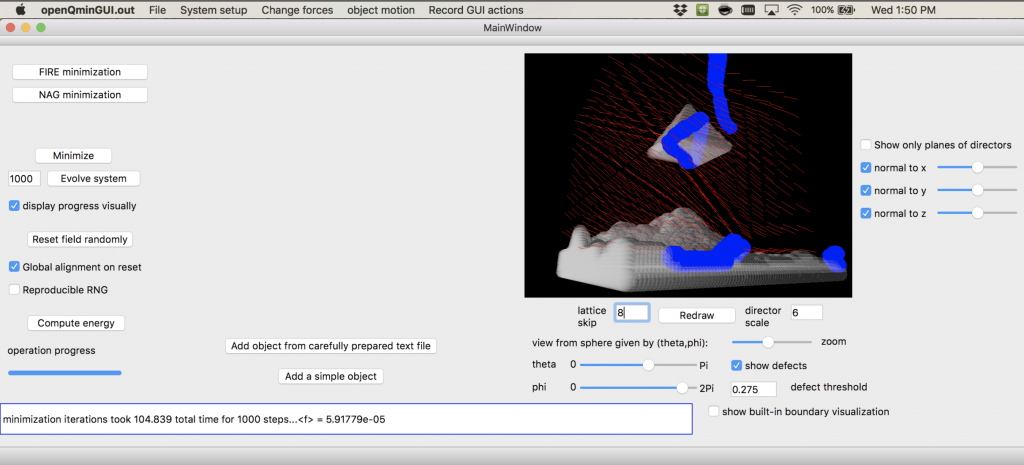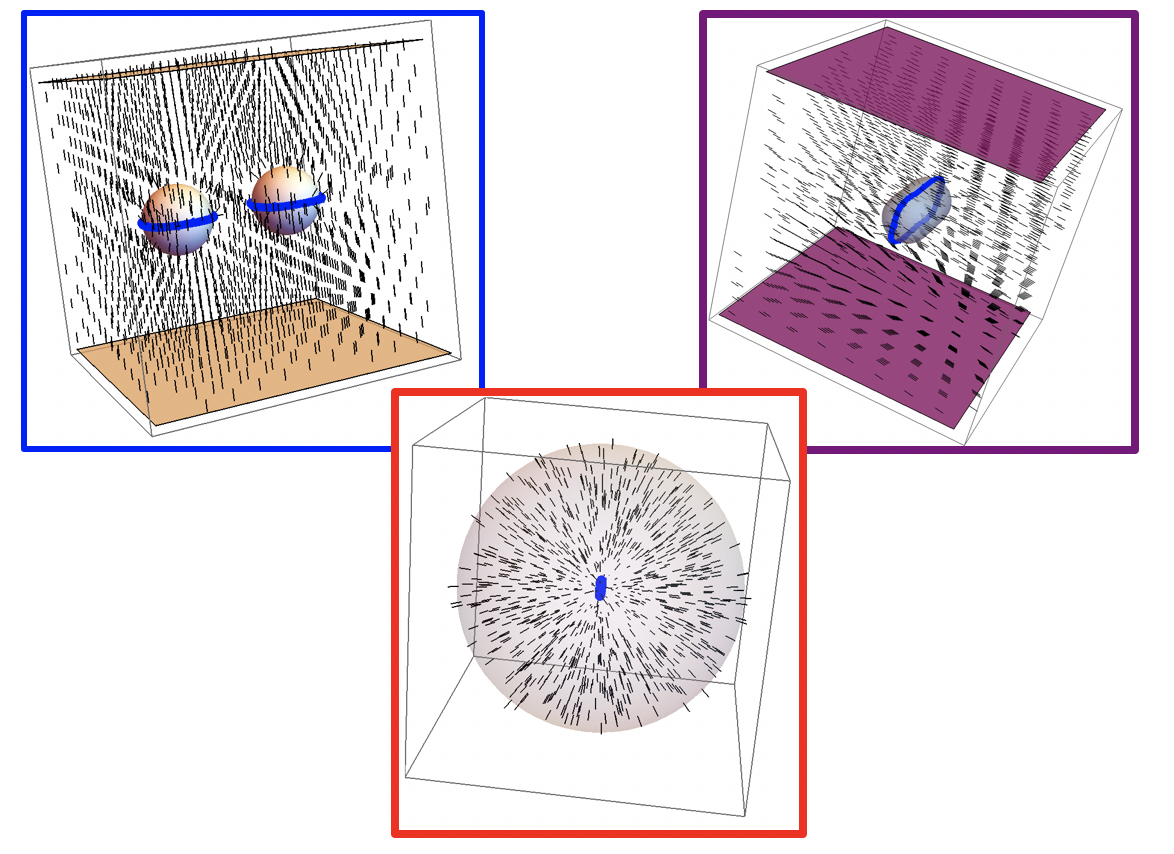https://github.com/sussmanLab/open-Qmin
open-Qmin is an open-source software package for numerical modeling of nematic liquid crystals and their topological defects.
In particular, open-Qmin applies relaxation methods to minimize the widely used Landau-de Gennes free energy functional under user-defined boundary conditions. Developed by Daniel Sussman (Emory University) in collaboration with our group, open-Qmin has the following features:
Open-source: Free to download, use, and edit
Accessible: Comes with a graphical user interface (GUI) for “real-time” manipulation of the nematic’s environment. Visualization routines in Mathematica and Python are also provided.
Fast: Allows utilization of GPU or CPU resources, and uses efficient minimization routines like the Fast Inertial Relaxation Engine (FIRE).
Scalable: Uses MPI parallelization to scale modeling volume up to ~ 1000 times larger than possible on a single CPU, accessing supra-micron scales often closer to experimental dimensions.
Adaptable: User-defined boundary conditions
Our peer-reviewed article on open-Qmin is published in Frontiers in Physics.

open-Qmin‘s GUI

Example modeling results for nematic topological defects in a droplet and around colloidal particles.

